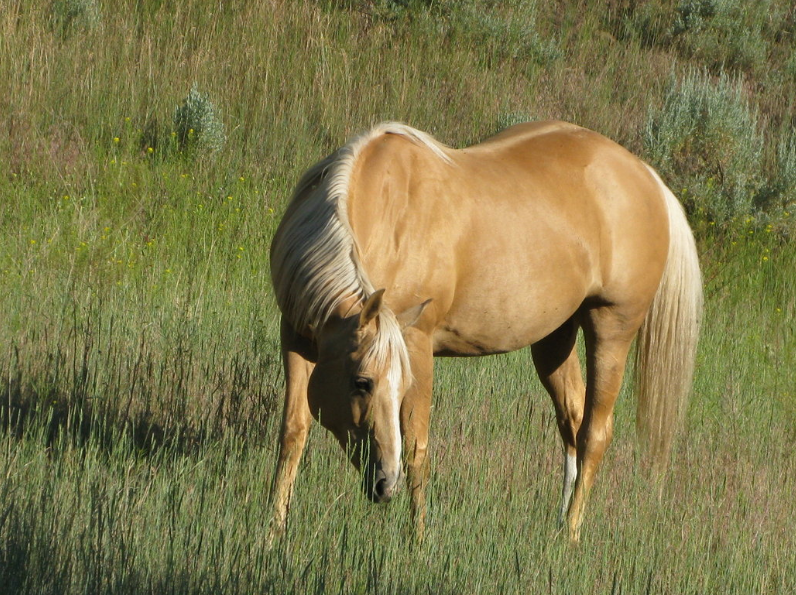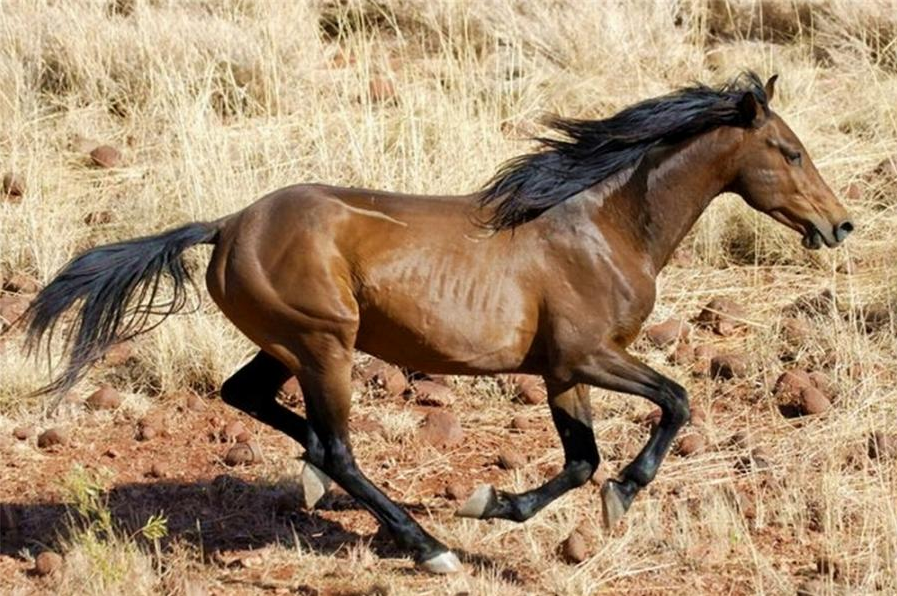Brumby Horse Overview
“Brumby” is a term used to describe a horse “Brumby” usually refers to a wild horse from Australia. They are the cousins to domestic horse which were either abandoned or released to the wild. “Brumby,” the term used to describe them, is a slang word “Brumby” can be believed to be a result of the 19th century. It is usually connected with wild or wild horses from Australia.
Brumbies can be found in a variety of regions in Australia in regions like the Australian Alps, the Northern Territory, Queensland, and other regions of the country. They have adjusted to the extreme conditions in the Australian outback, and are renowned for their strength and the ability to endure harsh conditions.
Through the years there has been debate and disagreement over how to manage Brumby populations. Some believe they are a symbolic cultural as well as a historical representation, but others believe that they could cause harm to the environment, especially in ecosystems that are fragile. Management of Brumby populations usually require the balance of preservation, culture considerations and environmental issues.
It is worth noting it is a subject of ongoing debate and efforts to identify humane and sustainable ways in managing Brumby populations and to preserve their significance to the culture of Australia.
Brumby Horse Health and Feeding
Health:
The Veterinary Clinic:
- Regular check-ups with a veterinarian are essential to check the general condition of Brumby horses, which includes the health of their teeth, parasite prevention vaccines, as well as any possibility of injuries.
- It is vital to prevent the spread of illness and ensuring the health of the populace.
The Hoof:
- Regular trimming and maintenance of the hoof are vital, as wild horses might not wear their hooves down like domestic horses that are on soft ground.
Treatment of Diseases:
- Feral horses are susceptible to illnesses such as strangles and equine flu. Controlling and preventing the spread of infectious illnesses is essential.
Supplements for Nutrition:
- In certain situations nutritional supplements could be required to treat particular deficiencies within the local plant.

Feeding:
The Foraging Behavior
- Brumby horses can hunt for a variety of species of grasses, plants, and other vegetation. They encourage and bring opportunities for behaviours of foraging.
Water Supply
- You must warrant a safe and reliable water source. A healthy diet is essential for good health overall.
Supplemental Feeding
- Based on the conditions of the environment in addition to the amount of forage from nature Supplemental feeding is essential, particularly during periods of food shortage or drought.
Monitor Body Condition
- Examine the condition of the body regularly in Brumby horses in order to warrant they’re maintaining an appropriate weight. Change feeding habits accordingly.
adaptation to local environment:
- Brumby horses have been adapted their local conditions and their diet can differ based on the area they live in. Knowing the local flora and fauna is vital to ensure the proper food.
Controlled Rehabilitation Feeding:
- In the event that Brumby horses are taken from the wild to benefit with rehabilitation and rehabilitation, controlled feeding practices must be used to warrant an gradual transition to the domesticated diet.
Brumby Horse Care and Grooming
Grooming and caring for Brumby horses is a process of respecting their natural habitat and maintaining their well-being and health. Although Brumbies are generally robust and well-adjusted to their natural surroundings, they could get some benefit from human intervention, particularly when they’ve been taken from their natural habitat.
Here are some things to consider to consider Brumby grooming and care for horses:
1. Respectful Interaction
- Begin to approach Brumby horses with a sense of patience and respect, knowing that they might not be used to contact with humans. Building trust is vital to the success of grooming and care.
2. Regular Health Checks
- Regularly conduct health checks to assess the overall health of your horse. Look for signs of injury lameness or signs of illnesses.
3. Dental Care:
- Regularly schedule dental exams since wild horses might not normally take their teeth out in the same way as domestic horses. Make sure to address dental issues quickly to assure the proper digestion and chewing.
4. Hoof Maintenance
- Examine the condition of hooves and plan regular trimming if needed. Feral horses might not naturally wear their hooves down more than domestic horses, particularly when they are located in a tight space.
5. Parasite Control:
- Create a parasite prevention program that addresses both external and internal parasites. Talk to a veterinarian about how to create an appropriate program based on your horse’s surroundings.
6. Feeding Considerations
- Access fresh water that is clean and assure that your horse is fed an adequate and balanced diet. If your horse was separated from their natural environment, you can gradually move into a more domesticated eating routine according to the need.
7. Shelter:
- Make sure that you have shelter available, particularly during severe weather conditions. Brumby horses are used to living outdoors, however providing shelter could benefit to protect them from harsh weather.

8. grooming sessions:
- Gentle grooming sessions are a great way to help the horse become familiar with the human touch. Use soft brushes to eliminate hair and dirt and pay close attention to the sensitive areas.
9. medical attention:
- If you think that the Brumby horse needs medical attention or intervention, consult an experienced veterinarian with experience in horse care for wild or feral.
10. Socialization and Training:
- In the event that you are considering if the Brumby horse is intended to be included in homes, it is worth considering the training process and the socialization aspect to assure they’re accustomed to the human touch and other common domestic settings.
11. Behavioral Monitoring:
- Be aware of the horse’s behavior on a regular basis to look for signs of discomfort, stress, or behavioral problems. Take action immediately to assure the horse’s health.
12. Environmental Enrichment:
- Create an environment that is enriching, for example, access to pastures natural obstacles, as well as interactions with other horses to enhance physical and mental health.
13. Documentation:
- Keep meticulous notes of your horse’s health as well as vaccinations, dental health as well as any other pertinent information.
14. Community Engagement:
- Engage your local community, animal groups as well as specialists in Brumby horse treatment to warrant a comprehensive and knowledgeable approach.
FAQs
A: What exactly is an Brumby Horse?
A: Brumby is a wild horse from Australia that descends from domestic horses that either fled or were released in the wild. They are renowned for their adaptability to harsh Australian conditions.
Q What was the story behind how Brumby horses come to be called?
A: The phrase “Brumby” has been believed to be been coined in the 19th century, in Australia. It is believed to originate directly from the surname of an Australian man named James Brumby, who was involved in the management of horses that escaped.
What is the location where can Brumby horses located?
A: The horses of Brumby can be located in a variety of regions in Australia including those in the Australian Alps, the Northern Territory, Queensland, and other regions of the country.
Q What are Brumby horses consume?
A: Brumbies have been designed to be forage for a variety of grasses, plants and natural vegetation. Their diet is dependent on the location and environmental conditions.
Question: Is Brumby horses considered to be a nuisance or cultural icon?
A: The place the status Brumby horses is the subject of debate. Many view them as historic and cultural symbols, whereas others claim that they could cause harm to the environment, especially in fragile ecosystems.
Q How are Brumby populations controlled?
Answer: Brumby population is managed by a combination with conservation initiatives, considerations for culture and environmental issues. Discussions are in progress and projects to develop sustainable and humane methods in the management of Brumby populations.
Q What is the possibility that Brumby horses become domesticated?
A: Although Brumby horses are wild and have adapted to wild, some can be domesticated through patience, education and the proper treatment. But, it’s crucial to keep in mind the fact that some Brumbies easily adapt to domestication.
Q What are the issues when it comes to caring for Brumby animals?
A: The difficulties in the care of Brumby horses involve the need to address their natural behavior and keeping their well-being in a domestic environment and balancing between population control and conservation.
What is HTML0? Q: How do you adopt and benefit Brumby horse?
A: Adoption, as well as help programs are offered in certain regions. Visit local government officials, rescue groups or wildlife management agencies to inquire about adoption procedures or volunteer opportunities to help Brumby horses.
Q: Do you know of any conservation efforts being undertaken for Brumby horse?
A Conservation efforts for Brumby horses require a mix of management of the population along with habitat protection, as well as public education. Government agencies and organizations could be involved in projects that aim to preserve these horses as well as their significance to culture.






